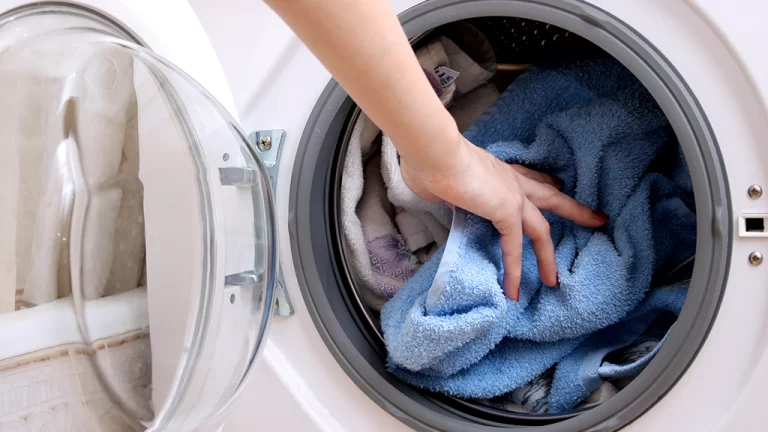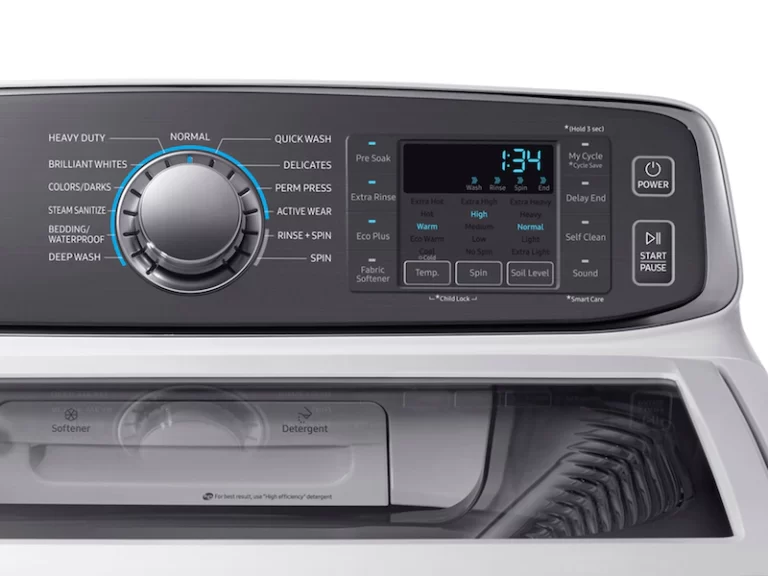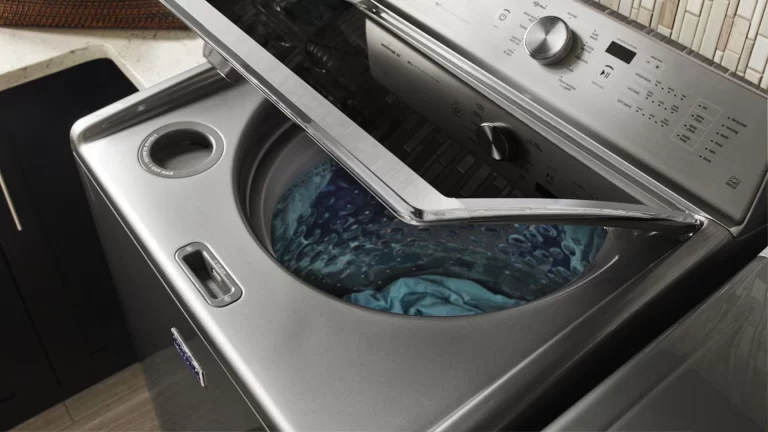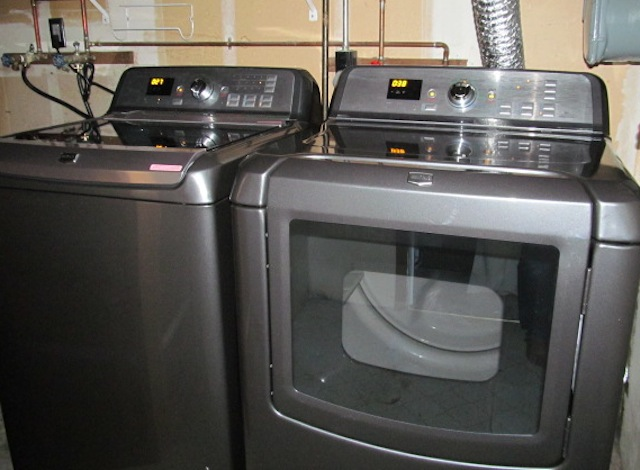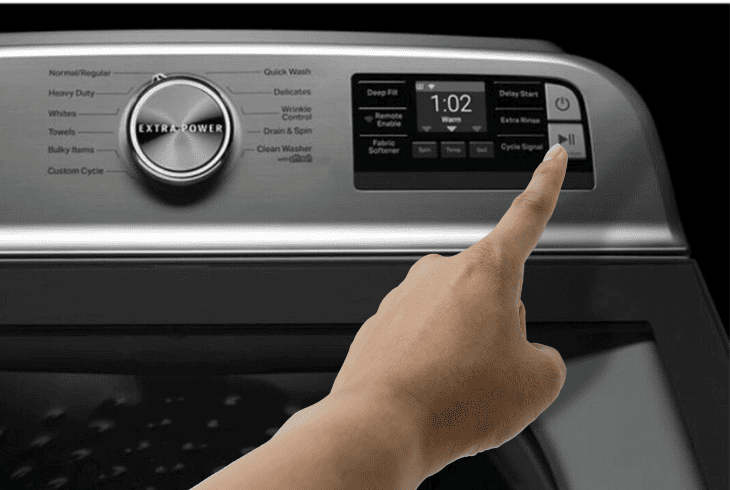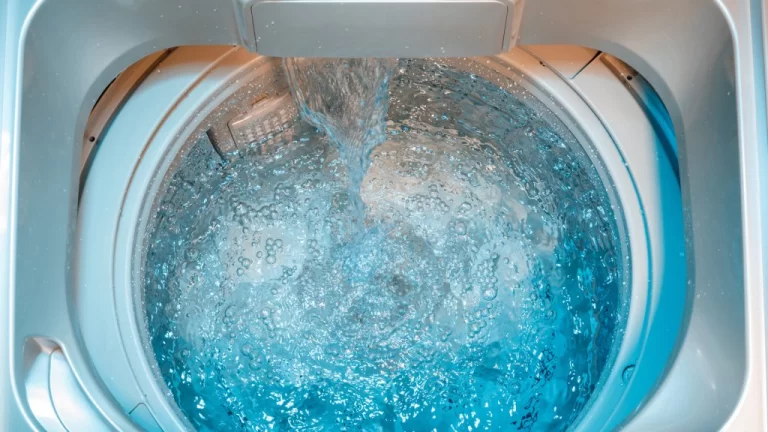Maytag Centennial Washers, well-known for their durability and performance, have become a household staple across the country. However, like all appliances, they are not immune to occasional hiccups. One common issue that frustrates users is when their washer won’t start. In this article, we explore the common causes of this issue and present practical solutions to get your washer running again.
If your Maytag Centennial Washer won’t start, it could be due to a variety of issues like power supply problems, a faulty lid switch, a malfunctioning start switch or timer, motor issues, or a defective control board. It’s crucial to diagnose the problem accurately for effective troubleshooting and repair.
Quick Troubleshooting Guide
| Issue | Symptoms | Potential Fixes |
| Power Supply | Washer shows no signs of life, no lights, no sounds | Check the outlet, circuit breaker, and power cord for issues. Try plugging in another device to ensure the outlet works |
| Lid Switch | Washer does not start or respond when lid is closed, no click sound | Check the switch for damage and replace if necessary |
| Start Switch and Timer | Washer does not respond when the start button is pressed | Test the switch for continuity using a multimeter and replace if necessary |
| Motor | Washer fills with water but does not agitate or spin | Check for humming sounds or overheating. The motor may need to be replaced |
| Control Board | Washer behaves erratically, doesn’t respond correctly to commands | Check for any burnt areas or components on the board. Might need professional assistance for replacement |
| Drive Belt | Washer doesn’t agitate or spin, but you can hear the motor running | Check for wear, damage, or slipping on the drive belt. Replace if necessary |
| Water Supply | Washer doesn’t fill with water at the start of the cycle | Ensure both hot and cold water faucets are turned on. Check for kinks or clogs in the hoses |
| Door Lock | Door does not lock, or washer doesn’t start when the door is closed | Inspect the door lock for damage and replace if necessary |
| Drain Pump | Washer doesn’t drain or spin, you may hear a humming noise | Check for clogs in the pump or hose. The pump may need to be replaced |
| Overloaded or Imbalanced Drum | Washer stops mid-cycle, may become noisy or vibrate excessively | Ensure the washer is not overloaded and that the load is evenly distributed |
Understanding the Maytag Washer Problems
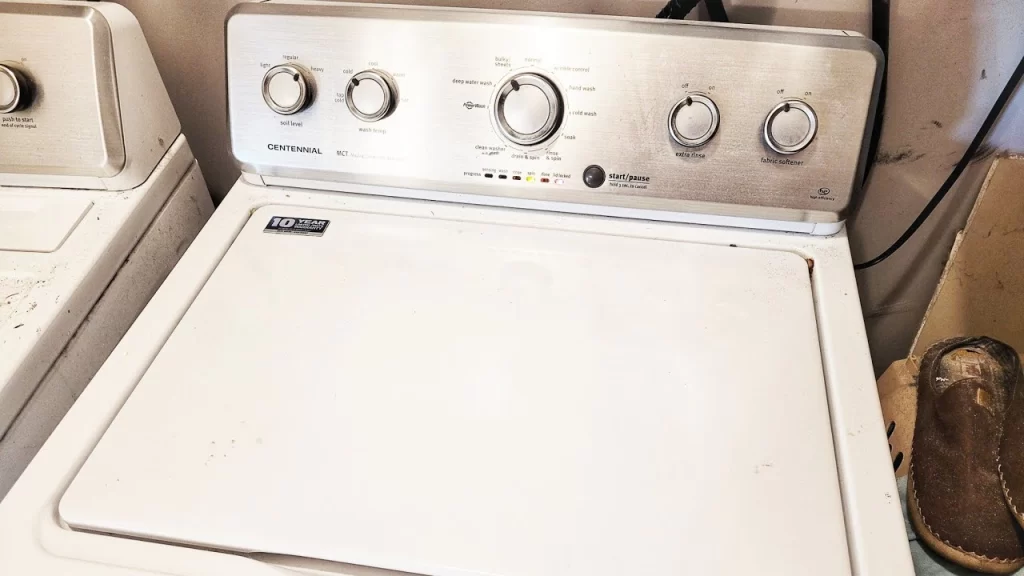
Maytag Centennial Washers, with their advanced features and reliable operation, are highly popular among homeowners. Despite their robust construction and excellent performance, they can sometimes run into issues, one of the most common being the washer refusing to start.
Understanding this problem requires a comprehensive look at the various factors and components that could be at play. As complex machines, washers rely on a network of interrelated parts to function. If even one component isn’t performing as it should, it could prevent the washer from starting.
Let’s start with the simplest explanation: power supply issues. It’s possible that your Maytag Centennial Washer is not starting due to a lack of power. This could be due to a faulty outlet, a tripped circuit breaker, or a damaged power cord. A simple check of your power supply can rule out these possibilities.
Next on the list of possible culprits is the lid switch. This safety feature prevents the washer from operating when the lid is open. A faulty lid switch could be inaccurately indicating that the lid is open, even when it’s closed, thus preventing the washer from starting.
Similarly, the start switch and timer are crucial for the washer’s operation. These components signal the beginning of the wash cycle and ensure its progression. If either is faulty, it could prevent the washer from starting or running properly.
Motor problems, while less common, can be another reason for your washer’s refusal to start. The motor drives the washer’s agitator and drum. If it’s burned out or has a fault, the washer won’t start or run properly.
The control board, essentially the brain of your washer, is another potential problem area. It oversees all of the washer’s operations, from water intake to spin cycles. An issue with the control board can cause various problems, including the washer not starting.
More infrequent but still relevant issues could include problems with the drive belt, water supply, door lock, drain pump, or even an overloaded or imbalanced drum.
Each of these problems manifests differently, allowing for specific symptoms to guide your troubleshooting process. Recognizing these signs is essential to diagnosing and resolving the problem effectively.
By understanding these potential issues, you can approach your Maytag Centennial Washer’s refusal to start with a more informed perspective. This knowledge can help you conduct initial troubleshooting steps and communicate more effectively with a professional repair service if needed.
Diagnosing and Fixing the Problem
1. Power Supply Issues
Problem: Power supply issues can result from various circumstances, such as a faulty outlet, a tripped breaker, or a damaged power cord.
Symptoms: The washer shows no signs of power, with no lights, sounds, or any indication of operation.
Steps to Fix:
- Step 1: Ensure the washer is plugged into a working outlet.
- Step 2: Test the outlet with another device to confirm it’s supplying power.
- Step 3: Check your home’s circuit breaker to ensure it hasn’t tripped.
- Step 4: Examine the power cord for visible signs of wear or damage.
- Step 5: If the power cord is damaged, it will need to be replaced by a professional technician.
2. Lid Switch Problems
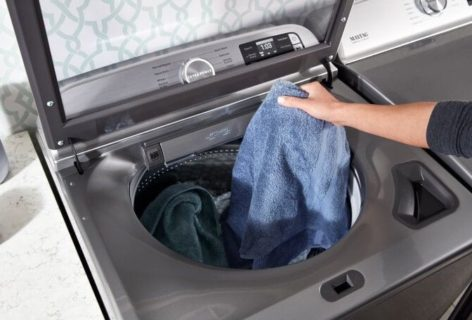
Problem: The lid switch is a safety feature designed to ensure the washer doesn’t operate when the lid is open. If this switch is faulty, it could falsely signal that the lid is open even when it’s closed, preventing the washer from starting.
Symptoms: The washer doesn’t start even when the lid is closed. You may not hear a click when the lid shuts, which is usually a sign of a functioning lid switch.
Steps to Fix:
- Step 1: Confirm the problem by manually depressing the switch to see if it operates.
- Step 2: If there’s no clicking sound or the washer doesn’t start, it likely means the lid switch is faulty.
- Step 3: Depending on your level of expertise, consider replacing the lid switch yourself or hire a professional to do so.
3. Start Switch or Timer Issues
Problem: The start switch and timer are crucial components that initiate and time the washing cycle. If either of these components is faulty, the washer might not start or progress through the cycle.
Symptoms: The washer doesn’t respond or start the cycle when the start button is pressed, or the timer doesn’t advance.
Steps to Fix:
- Step 1: Attempt to start the washer in different cycle settings to see if it responds.
- Step 2: If the washer starts in one setting but not another, it could indicate a faulty timer.
- Step 3: The start switch and timer are complex components, so it’s best to hire a professional to diagnose and replace them.
4. Motor Issues
Problem: The motor is the heart of the washer, driving the agitator and spin cycle. If the motor is faulty or burned out, the washer will not start or run properly.
Symptoms: The washer is silent and shows no sign of agitation or spin during the cycle, or it may stop suddenly during a cycle and fail to restart.
Steps to Fix:
- Step 1: Listen for any humming or buzzing sounds from the motor, which could indicate it’s trying to start.
- Step 2: If the motor is hot to touch, it may have overheated and tripped its thermal overload switch.
- Step 3: Once the motor cools down, try restarting the washer.
- Step 4: If the motor is not the issue, contact a professional to check the motor’s control circuits.
5. Control Board Problems
Problem: The control board manages all operations of the washer, and a fault in this board can lead to the washer not starting.
Symptoms: The washer does not respond to any commands, fails to start, or starts but doesn’t complete the washing cycle.
Steps to Fix:
- Step 1: Reset the control board by unplugging the washer for about a minute and then plugging it back in.
- Step 2: If the reset doesn’t work, the control board might be faulty.
- Step 3: Given the complexity of diagnosing and replacing a control board, it’s best to consult a professional.
- Please note: The next five problems are less common but still relevant to Maytag Centennial Washers:
6. Drive Belt Issues
Problem: The drive belt connects the motor to the drum. If the belt is broken or has come loose, the washer will not start.
Symptoms: You may hear the motor running, but the drum doesn’t move.
Steps to Fix:
- Step 1: Unplug the washer and inspect the drive belt.
- Step 2: If the belt is broken or loose, it will need to be replaced.
7. Water Supply Problems
Problem: If the washer doesn’t fill with water, the control system might prevent it from starting.
Symptoms: The washer doesn’t fill with water when a cycle is selected.
Steps to Fix:
- Step 1: Check the water supply hoses for kinks or blockages.
- Step 2: Make sure the faucets are turned on and supplying water.
8. Door Lock Issues

Problem: Some washer models won’t start unless the door is properly locked.
Symptoms: The washer doesn’t start, and you might see an error code indicating a door lock issue.
Steps to Fix:
- Step 1: Inspect the door lock for any visible damage.
- Step 2: If the lock is damaged or not engaging properly, it may need to be replaced.
9. Drain Pump or Hose Clogs
Problem: If the washer cannot drain properly due to a clog in the drain pump or hose, it might not start.
Symptoms: The washer doesn’t drain properly or at all, and might not start a new cycle.
Steps to Fix:
- Step 1: Check the drain hose for clogs and clear out any blockages.
- Step 2: If the drain pump is clogged or damaged, it may need to be cleaned or replaced.
10. Overload or Imbalance Issues
Problem: If the washer is overloaded or the load is imbalanced, the washer might not start in order to prevent damage to the motor or drum.
Symptoms: The washer doesn’t start, or it starts but then stops or makes unusual noises.
Steps to Fix:
- Step 1: Redistribute the laundry evenly in the drum.
- Step 2: Make sure not to overload the washer – follow the manufacturer’s instructions for load size.
Preventive Measures: Maintenance Tips for Maytag Centennial Washer
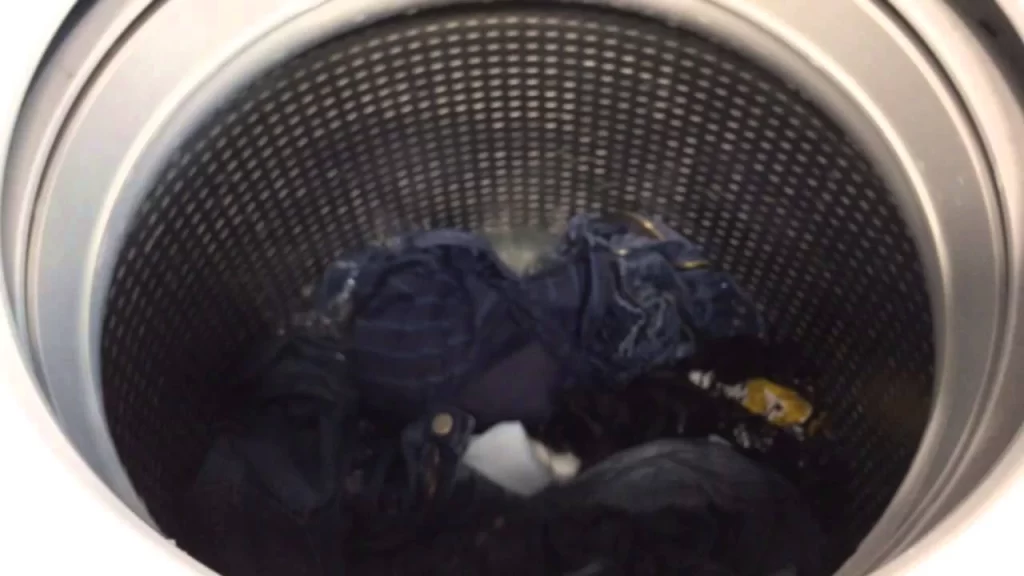
While problems can arise with any appliance, there are proactive steps you can take to prolong the life of your Maytag Centennial Washer and help prevent many common issues.
- Regular Inspection: Make it a habit to regularly inspect your washer for signs of wear and tear. Check the hoses for any signs of bulging, leaking, or cracking. Inspect the power cord for any signs of damage. If you notice anything out of the ordinary, it’s best to address the issue promptly to prevent more significant problems down the line.
- Proper Loading: Overloading your washer can put undue stress on the motor and other components, leading to potential breakdowns. Always adhere to the manufacturer’s guidelines for load size and ensure the load is evenly distributed to prevent imbalance issues.
- Use the Right Detergent: Always use High-Efficiency (HE) detergent in the appropriate amount for your Maytag Centennial Washer. Regular detergents produce too many suds, which can lead to residue build-up and affect the performance of your machine.
- Clean the Washer Regularly: Over time, residue from detergent and fabric softeners can build up, leading to potential clogs or efficiency problems. Using a washing machine cleaner or a DIY mixture of vinegar and baking soda can help keep your washer clean and running efficiently.
- Ensure Proper Installation: Make sure your washer is properly installed and level. An improperly installed washer can lead to issues with imbalance and excessive vibration, which can damage components over time.
- Care for the Lid and Door: Avoid slamming the washer’s lid or door. Repeated impact can damage the lid switch or door lock mechanism, which can prevent the washer from starting.
- Avoid Excessive Use of Fabric Softeners: These products can leave residue on the inner workings of your washer, potentially leading to clogs or performance issues.
- Regular Servicing: Even with the best care, components can wear out over time. Regular servicing by a professional can help catch potential issues before they become significant problems.
- Turn Off the Water Supply: When not using your washer for extended periods (like while on vacation), turn off the water supply to prevent any leaks or water pressure surges.
- Clean Out the Lint Filter: Some models have a lint filter that needs to be cleaned out regularly. A clogged filter can affect the washer’s performance and may cause problems over time.
Remember, these preventive measures can significantly increase the lifespan of your Maytag Centennial Washer and ensure it operates optimally. However, if issues do arise, don’t hesitate to consult a professional. Regular maintenance and prompt attention to any problems are the keys to keeping your washer running smoothly for years to come.
Seeking Professional Appliance Repair Service

When the problem lies beyond simple solutions, it’s advisable to seek help from a professional appliance repair service. Professionals can accurately diagnose and rectify complex issues, ensuring your washer runs smoothly. Plus, professional repair often comes with a warranty, providing assurance and protecting your investment.
FAQs
How do I reset my Maytag Centennial Washer if it isn’t starting?
Sometimes, a simple reset can resolve minor electrical glitches. To reset your Maytag Centennial Washer, unplug the machine from its power source, wait a minute, then plug it back in and try to run a cycle.
My washer is receiving power, but it still won’t start. What could be the issue?
Several components might be causing this problem. It could be a faulty lid switch, start switch, timer, or even issues with the motor or control board. Each has unique symptoms, so it’s best to consult the troubleshooting steps or hire a professional for accurate diagnosis and repair.
How do I know if the lid switch is causing my washer not to start?
If your washer doesn’t start or respond when the lid is closed, it could be a sign of a faulty lid switch. Normally, you should hear a clicking sound when the lid closes, indicating that the switch is working. If you don’t hear this sound, the switch might need to be replaced.
My Maytag Centennial Washer fills with water but doesn’t start the cycle. What could be wrong?
This issue might indicate a problem with the motor or the control board. The motor drives the agitator and the drum, and a fault in the motor can prevent the cycle from starting. If the control board is malfunctioning, it might not send the correct signals to start the washing cycle.
I maintain my washer well, but it still won’t start. What should I do?
Despite regular maintenance, components can wear out over time. If your washer won’t start, it’s best to consult a professional technician. They can diagnose and repair any underlying issues, even those not easily noticeable. Regular professional servicing can help maintain the longevity and performance of your washer.
Conclusion
While Maytag Centennial Washers are known for their durability, occasional problems can arise. Understanding the common issues and how to diagnose them empowers you to take the necessary steps to get your washer back in action. Regular maintenance and prompt professional repair can ensure your washer remains a reliable helper in your household.

